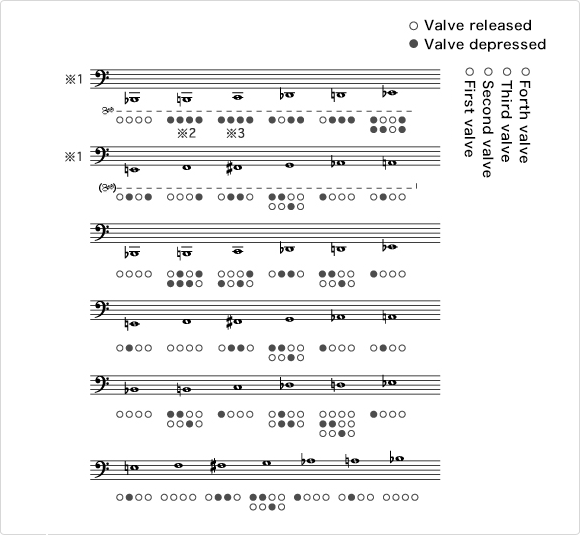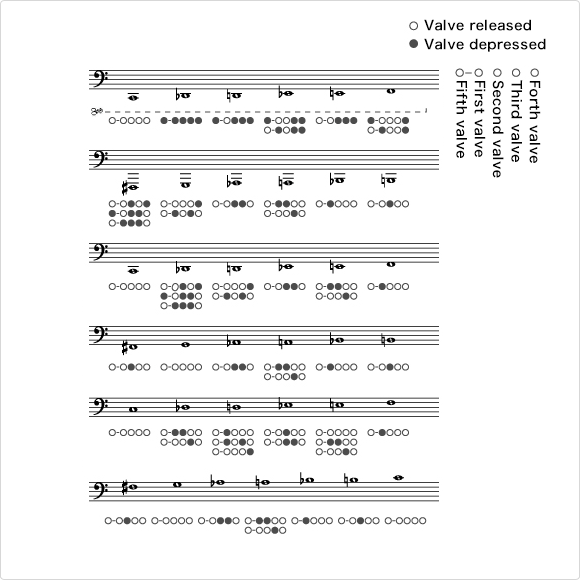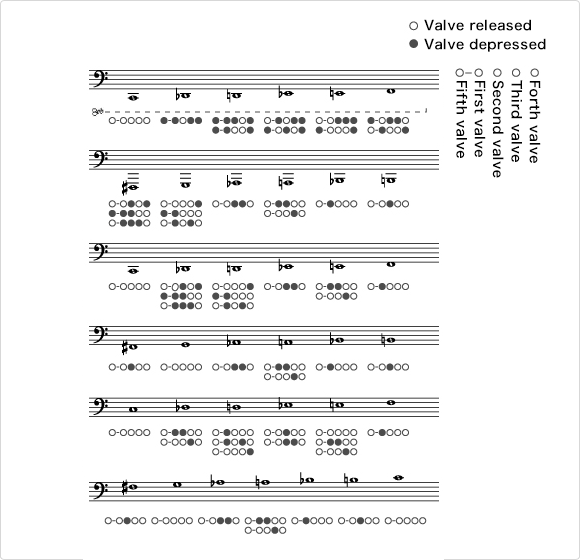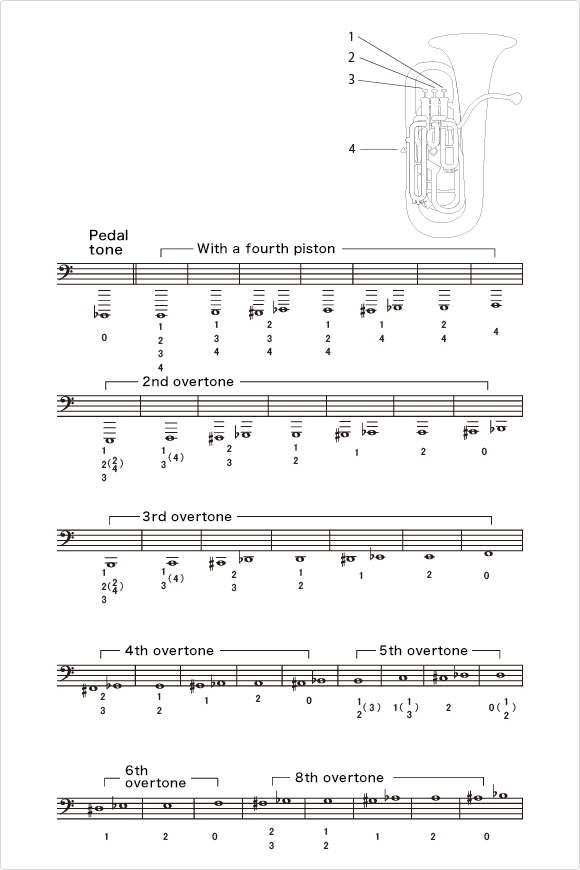How to Play the Tuba
Tuba Fingering
Fingering for a 4-valved tuba
School students in brass bands may have heard comments of confusion regarding the fourth piston valve. Being able to use the fourth valve increases the possibilities available to you, so there is no reason not to use it. Furthermore, some tubas have five valves. Let us also take a look at that fingering, since the fifth slide can lower the pitch by 4/3 of a tone in some cases, or by two tones in others.
Fingering diagram for the 4-valve B♭ tuba

*1 Fingerings for the lower notes may change depending on the tuba's make or model.
*2 Slide 1 and slide 4 fully open
*3 Slide 1 almost fully open
- Even with four valves, fingerings change with compensating systems. Although it is possible to produce higher or lower notes than shown with these fingerings, you will need to consult an advanced player's manual or ask your teacher to help you.
- For some tonal ranges or different makes/models, ○○●○ may produce better pitch than ●●○○.
Fingering Diagram for the Fifth Valve
Fingering Diagram for the 4/3-Tone Fifth Valve (C tuba)

- The fifth valve may be slightly higher or lower depending on the instrument's make or model.
- You may need to find the right pitch by moving slide 1, slide 5, and so on. Also, you may encounter 6-valved tubas, or tubas other than the 4/3-tone or 2-tone models. Fingering guides are not absolute. Please ask your teacher for guidance and experiment to find fingerings that work well for you.
- In the low tonal register, you may find the pitch to be more obvious if you play one octave higher with the same fingering.
Fingering chart for the fifth value on the second note

- The fifth valve may be slightly higher or lower depending on the instrument's make or model.
- You may need to find the right pitch by moving slide 1, slide 5, and so on. Also, you may encounter 6-valved tubas, or tubas other than the 4/3-tone or 2-tone models. Fingering guides are not absolute. Please ask your teacher for guidance and experiment to find fingerings that work well for you.
- In the low tonal register, you may find the pitch to be more obvious if you play one octave higher with the same fingering.
Fingering diagram for a B♭ tuba with a compensating system
B♭ tuba fingering chart

Musical Instrument Guide:Tuba Contents
Origins
Structure
How to Play
How the Instrument is Made
Choosing an Instrument
Trivia
- A Massive Tuba from 100 Years Ago
- Depending on the Country, a Baritone is Not a Baritone
- The Cinbasso-Popular in Italian Opera
- All Brass Instruments Have Marching Band Models
- Famous Musical Pieces for the Tuba (Bass)
- The Compensating System for the Euphonium
- There are Various Mutes for the Tuba
- Ease of Playing Pedal Tones
- Why Are Tubas So Expensive?
- Do Jazz Musicians Play the Tuba?
- Brass Band Songs Featuring the Tuba
- An Instrument in the Key of B♭, Yet the Music is Written in C
